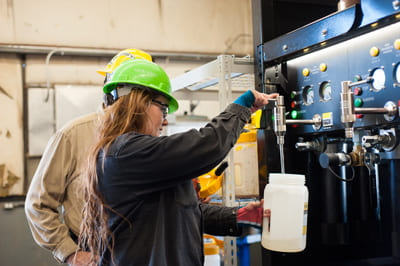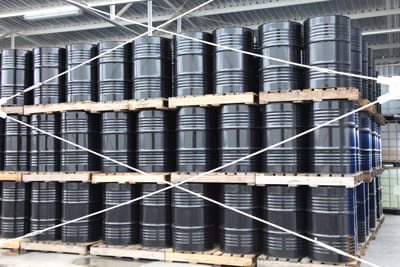Lubrication Contamination Prevention
 How many articles have you read, or seminars listened to, that tout the value of contamination control? If you are like me, they number in the hundreds—if not thousands. One thing about these articles and seminars that bothers me is the word “control”.
How many articles have you read, or seminars listened to, that tout the value of contamination control? If you are like me, they number in the hundreds—if not thousands. One thing about these articles and seminars that bothers me is the word “control”.
If you look up the definition of control, it’s “a function of management that helps to check for errors to take corrective actions.” It implies that we assume contamination is inevitable, and the best we can hope for is to minimize its impact. That just does not ring true and is self-limiting.
My passion is reliability, and that means being risk-averse. Regardless of my position within a corporate organization or in later years as a consultant, eliminating risks has been my prime directive and served me well in my career growth. Because of this passion, the importance of using the proper lubricant, assuring that it is free of contamination, and is dispensed correctly is fundamental to an effective asset management program.
That is why prevention, rather than control, is a far better approach. Prevention is defined as “the act of preventing something from happening.” If you want to prevent contamination, read on; otherwise, there are numerous articles on control to choose from.
What is a Successful Lubrication Program?
 A successful lubrication program must start with contamination prevention. Most people acknowledge that contaminated lubricants cause accelerated wear, thermal damage, premature wear out, and catastrophic failures of the capital assets that are crucial to the continued reliability and sustainability of their manufacturing and process plants. Unfortunately, this awareness does not seem to translate into effective contamination prevention.
A successful lubrication program must start with contamination prevention. Most people acknowledge that contaminated lubricants cause accelerated wear, thermal damage, premature wear out, and catastrophic failures of the capital assets that are crucial to the continued reliability and sustainability of their manufacturing and process plants. Unfortunately, this awareness does not seem to translate into effective contamination prevention.
Contamination prevention does not require an advanced degree in engineering or expertise in tribology. A good dose of common sense and a little logic will suffice. Think about how lubricants are purchased, received, stored, and deployed in your plant or facility. What is the potential for introducing contamination in each of these steps? If you go through each, you will begin to see where and why contamination becomes a problem. Here are a few ideas to get your program started.
Assess Your Lubrication Program
Be diligent in your assessment of each step in the process. Do not assume anything. Most of us would assume that our lubricant vendor will consistently follow best practices and ensure a contamination-free lubricant, but we need to understand that they are under the same competitive pressures that we face. Sometimes, these pressures can force practices that increase the probability of contamination.
The same is true once the lubricants are in our possession. We all know that proper storage, labeling, and distribution of lubricants are crucial to the sustainment and preservation of our capital assets, but business pressures too often force deviation from best practices.
The key to this initial assessment is to identify all existing and potential issues, from procurement to disposal, that could introduce contamination and/or strip lubricity from our lubricants.
Stop Paying for Contaminated Lubricants
 New lubricants, especially oil, are often the dirtiest in the plant. The containers vendors use for new oil are frequently recycled from previous orders. Reusing bulk containers, typically drums or plastic tanks, is a cost saver for both the vendor and end-user, but it has a high probability of introducing contamination.
New lubricants, especially oil, are often the dirtiest in the plant. The containers vendors use for new oil are frequently recycled from previous orders. Reusing bulk containers, typically drums or plastic tanks, is a cost saver for both the vendor and end-user, but it has a high probability of introducing contamination.
Lubricant producers and their distributors are not required to ensure the cleanliness of these recycled containers or the new oil contained within them. Unless the vendor states that the lubricant meets ISO cleanliness standards or it is implicitly part of your purchase agreement, the probability of contamination is high – you are essentially paying for contaminated lubricants.
Some vendors are meticulous in their cleaning and repurposing of drums, others are not. Numerous analyses of incoming lubricants have confirmed that a significant percentage of “new” bulk lubricants are more contaminated than that in your critical machines after hours of use. The only way to be sure that your incoming lubricant is contaminant-free is to test it. If it is contaminated, there are two ways to resolve the issue.
First, never accept or pay for contaminated lubricants. Insist that the vendor replaces or reimburses you for the added expense of in-house filtration. Vendors will quickly get the message and improve their drum reclamation and storage practices. Insist that your vendor provides certification of the cleanliness of any bulk lubricants as part of your incoming acceptance procedure.
Alternately you can filter all incoming bulk lubricants before storing or deployment, but this is reverting to control rather than prevention. The best, most cost-effective approach is to prevent contamination from entering your plant. Filtering all your bulk lubricants can be a significant, recurring cost that can be avoided by simply not accepting contaminated lubricants in the first place.
Filtering lubricants not only has the potential to introduce contaminants, but it can also strip additives from the oil, reducing its overall lubricity. Use care when selecting the degree of filtration used to remove particulate matter. Remember, when using absolute filtration, 99.9% of particulates equal to or greater than the micron rating will be stripped from the lubricant. Make sure that doesn’t include the additives package.
Properly Store Bulk Lubricants
 Climate control space is expensive and often limited. As a result, some facilities store their bulk lubricants in unconditioned sheds, open-roofed structures, and other inappropriate locations. From the viewpoint of asset reliability, cost of ownership, and useful life, this is a severe mistake, often made because the decision-makers don’t understand the long-term impact of their space allocation decisions.
Climate control space is expensive and often limited. As a result, some facilities store their bulk lubricants in unconditioned sheds, open-roofed structures, and other inappropriate locations. From the viewpoint of asset reliability, cost of ownership, and useful life, this is a severe mistake, often made because the decision-makers don’t understand the long-term impact of their space allocation decisions.
The long-term impact of contamination is often hidden by the added maintenance costs and reduced asset useful life that proper lubrication would prevent. Because these recurring costs are hidden, the correlation between lubricant storage decisions and the impact on the total cost of ownership and the return on invested capital is rarely made visible.
Storing lubricants in a non-climate-controlled environment, especially outdoors, directly opposes the principles of contamination control and prevention. Bulk lubricants are a known source of contamination.
For example, petroleum-based lubricants are hygroscopic, meaning they absorb moisture from the air. This is exacerbated by changes in temperature and humidity. This moisture, along with other airborne particulates, will siphon through any openings in the storage vessels and contaminate the bulk lubricant. To prevent this contamination, the lubricants must be stored in an environment that minimizes the potential for contamination by maintaining air purity, moisture content, and temperature.
The optimal way to store and dispense bulk lubricants is the subject of much debate. Some argue that special storage systems with built-infiltration, breathers, and ventilation systems are necessary. Others believe that the vendor’s bulk drums, stored at a downward angle and equipped with dispensing valves in the bung, are sufficient.
Tanks are rarely completely full, and the space above the lubricant level, known as a headspace, is a breeding ground for contaminants. Oil mist, ingested dirt, and water vapor vary based on ambient conditions, and they are always present and generating lubricant contamination.
Headspace water vapour and suspended water in the lubricant continuously seek equilibrium; if moisture ingestion is minimized, free water in the lubricant will vaporize into the headspace, improving lubricant properties. Unfortunately, when the ingestion of moisture is not controlled, the opposite happens, and the lubricant becomes even more contaminated with water.
The final storage decision is driven by cost-benefit. If a high volume of lubricants is used, an investment in a custom system is warranted. But, for most small to mid-sized plants, properly using the vendor’s drums will be enough.
Accurately Distribute Bulk Lubricants
The internal reuse of storage containers and improper labelling are other self-induced sources of contamination. Most plants utilize five to fifteen different lubricants to effectively protect and preserve their assets, therefore, a standard procedure for allocating, using, and labelling storage containers is fundamental for effective contamination prevention and ensuring the proper lubricants are used for each application.
Unfortunately, too many plants are sorely lacking in this area. Their work orders, which drive the lubrication process, lack clear identification of the proper lubrication and application method, and they randomly reuse containers, hoses, and other filling accessories. In these cases, lubrication is treated as an afterthought rather than a crucial maintenance requirement.
Conclusion
In the end, eliminating lubricant contamination is a matter of choice. One can continue the never-ending fight to control the myriad of causal factors that permit contamination or permanently prevent the potential by removing them.
Contamination prevention is not rocket science. It just requires the initial effort needed to fully understand the possible sources of contamination and the use of common sense, and a little logic, to eliminate the possibility.
